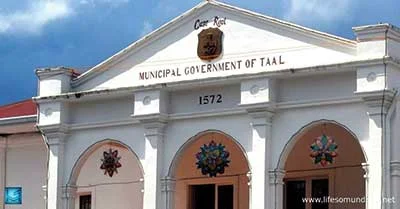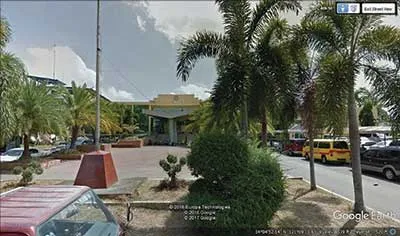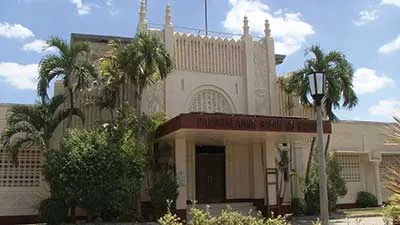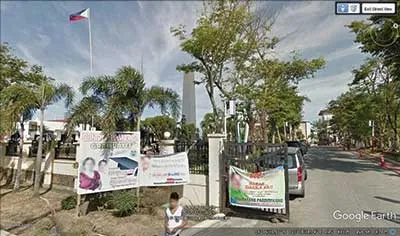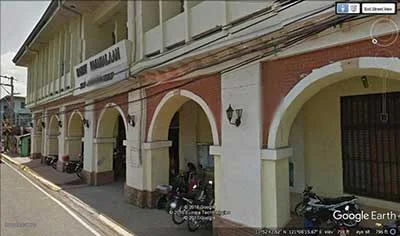Batangas Province’s Oldest Towns and Cities
Batangas was the first place in Luzon that the Spaniards explored in 1570 when Miguel López de Legazpi sent Martin de Goite and Juan de Salcedo to explore the island from their foothold in the Visayas. It is hardly surprising, therefore, that many of the country’s oldest colonial towns were established over territory that would eventually become the Province of Batangas.
In this article, we list nine of the oldest towns and cities based on their foundation as Spanish colonial settlements and as could be determined by documents. Only those founded in the eighteenth century or earlier are listed, since those founded later are, therefore, relatively recent.
1572 TAAL
Folklore and archeological findings along the Pansipit River suggest that there were settlements in what is present-day Taal as early as the 13th century and that the inhabitants of these settlements were actively trading with China. However, Taal as a geopolitical entity in the Spanish era was founded in 1572 as a Christian pueblo or settlement by the Augustinian friar Diego Espinas in the area presently known as Balangon in the town of Agoncillo. The town’s inhabitants relocated to present-day San Nicolas because of persistent Moro raids before being forced in 1754 to again move to its present location because of the volcano’s cataclysmic 7-month long eruption.1
1578 BALAYAN
It may seem contentious to some that Balayan is next to Taal among Batangas’ oldest towns, particularly as there appears to be historic evidence in Chinese annals that seem to indicate that Balayan existed as early as the 11th century. The date given in this article, however, refers to when the place was officially founded by the Franciscan friars Esteban Ortiz and Juan de Porras and designated a municipality under His Royal Highness Felipe II of Spain. At the time of its founding, Balayan’s territory included Calaca, Lian, Calatagan, Tuy and Nasugbu.2
1580 BATANGAS CITY
Batangas City’s official web site gives the date of the founding of a settlement called “Batangan” as 1581. However, Augustinian records contained in the book “Memoria acerca de las Misiones de los PP. Agustinos Calzados en las Islas Filipinas” placed the founding of a Christian pueblo with about six hundred natives at 1580. The Augustinian friar Juan de Medina described Batangas, as the town would be renamed to, as “located on a very beautiful bay.”3
1584 TANAUAN CITY
There were two pueblos founded by Augustinian friars in the 16th century close to what used to be called Lake Bombon, presently Taal Lake, and are now part of the territory of present-day Tanauan City. The first of these was Tanauang, founded in 1984; while the second was Sala, founded in 1986.3 Inhabitants of Tanauang and Sala first moved to what is present-day Bañadero and later to the present-day poblacion of Tanauan City in 1754, like those of Taal forced to flee for safety because of the volcano’s prolonged eruption.4
1605 LIPA CITY
Augustinian records place the founding of Lipa at the year 1605. The original pueblo or settlement was a lot closer to Lake Bombon in what is present-day Tagbakin. The pueblo was initially called San Sebastian. In 1724, because of the volcano’s eruption, inhabitants of the pueblo had to relocate to what is present-day Lumang Lipa, a village part of the Municipality of Mataas-na-Kahoy. They were on the march again in 1754 because of the stronger and more prolonged eruption of the volcano, for a couple of years encamped in what is present-day Balete before moving further inland and into safety in the present-day city poblacion’s location.5
1641 BAUAN
It may come as a surprise to many that Bauan started as an Augustinian mission settlement along the shores of Taal Lake close to Mount Maculot. Records of these very Augustinians place the foundation of a pueblo called Baoang at the year 1641. In 1662, inhabitants of the settlement moved to a place called Durungao, which we must assume to be in the vicinity of a present-day barangay in Bauan. The location was probably made necessary by Moro raids or volcanic activity. These people moved to a new location called Sinala, which is also the name of a present-day barangay in the municipality, in 1671. In 1690, they moved for the last time to where the center of where the present-day town of Bauan is located.6 Bauan’s geographical coverage used to be much larger and once included the present-day municipalities of Mabini, San Pascual, San Jose, Alitagtag and Cuenca.
1666 SANTO TOMAS
Santo Tomas started life as a settlement under a Captain Manuel Melo. The settlement’s location was chosen because of its proximity to the San Juan River. Originally, the place was given the name Santo Tomas de Aquino after a High Prince of the Order of the Dominicans. It goes without saying that the Dominicans were the first friars who were assigned to the settlement to work on the conversion to and subsequent instruction of the natives in the Roman Catholic religion.7
1687 ROSARIO (Unconfirmed)
The inclusion of Rosario in this list is somewhat contentious because the establishment of the municipality as it is known in the present day is comparatively recent. However, albeit unconfirmed, the earliest settlement of what would eventually become first Santo Rosario and subsequently just Rosario was supposed to have been established in what is present-day Lobo as far back as 1687. The inhabitants of this settlement were supposedly forced to flee over the years by frequent Moro raids to present-day Taysan then to present-day Padre Garcia. Because the town center when Rosario was still at Padre Garcia was flattened during World War II, after the war the American military command decided to move the entire town to its present day location.8
1765 SAN JOSE
Originally named Malaquing Tubig (big waters), San Jose was originally part of Baoang or what would eventually become known as Bauan. Augustinian records, however, show that San Jose became a separate pueblo in 1765. Residents of Malaquing Tubig were supposed to have petitioned the Spanish colonial government that the place be declared a separate pueblo. The petition was subsequently granted by the Spaniards and the new pueblo was initially called San Jose de Malaquing Tubig.9
Notes and references:
1 “History and Culture,” online at Taal Heritage Town.2 “History of Balayan,” online at the Bayan ng Balayan official web site.
3 “Memoria acerca de las Misiones de los PP. Agustinos Calzados en las Islas Filipinas: presentada al Excmo. Sr. Ministro de Ultramar,” Madrid 1892.
4 “Tanauan, Batangas,” Wikipedia.
5 “History,” online at City of Lipa Official Web Site.
6 Municipality of Bauan Official web site.
7 “History,” online at the Municipality of Santo Tomas, Wordpress.
8 “Rosario, Batangas,” Wikipedia.
9 “San Jose, Batangas,” Wikipedia.

